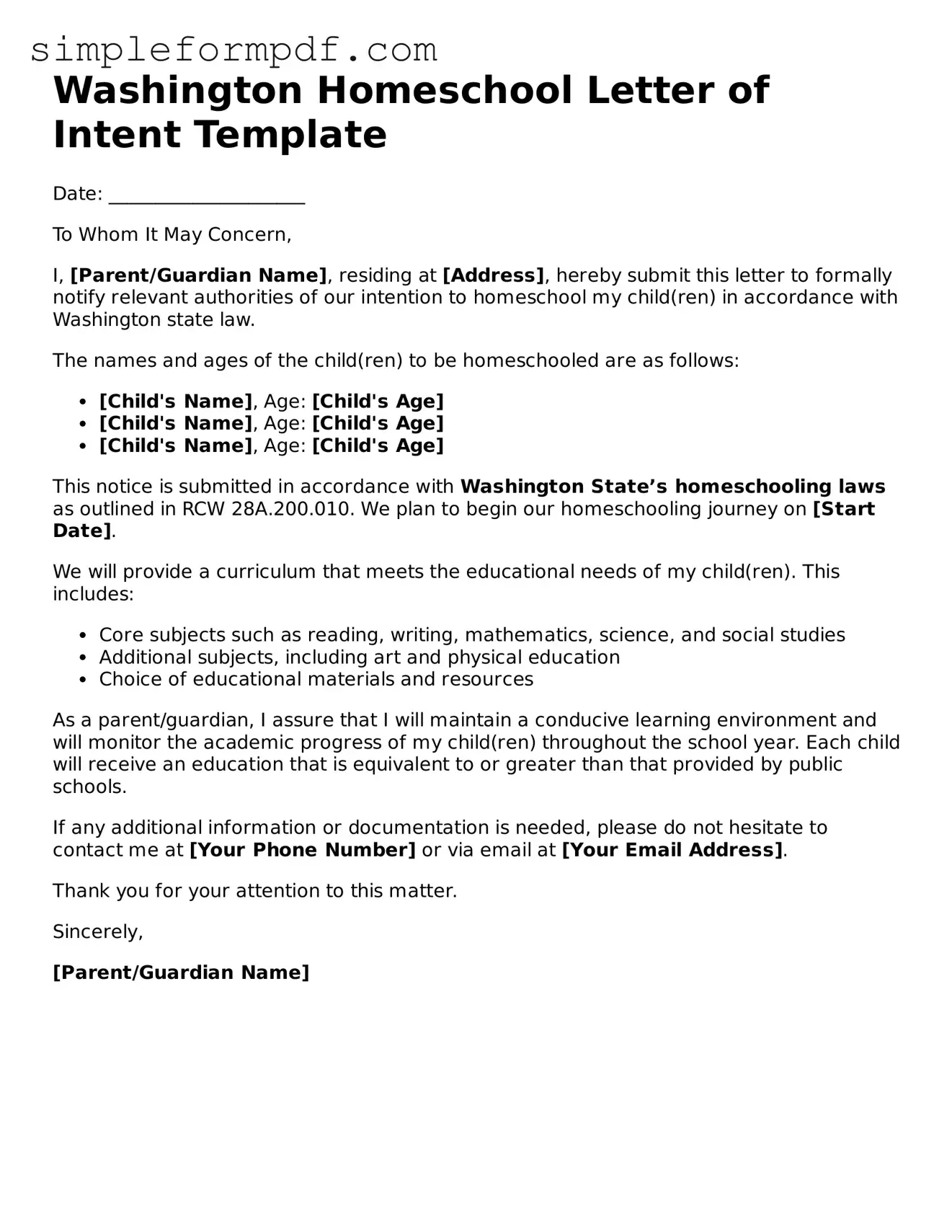Washington Homeschool Letter of Intent Template
Date: _____________________
To Whom It May Concern,
I, [Parent/Guardian Name], residing at [Address], hereby submit this letter to formally notify relevant authorities of our intention to homeschool my child(ren) in accordance with Washington state law.
The names and ages of the child(ren) to be homeschooled are as follows:
- [Child's Name], Age: [Child's Age]
- [Child's Name], Age: [Child's Age]
- [Child's Name], Age: [Child's Age]
This notice is submitted in accordance with Washington State’s homeschooling laws as outlined in RCW 28A.200.010. We plan to begin our homeschooling journey on [Start Date].
We will provide a curriculum that meets the educational needs of my child(ren). This includes:
- Core subjects such as reading, writing, mathematics, science, and social studies
- Additional subjects, including art and physical education
- Choice of educational materials and resources
As a parent/guardian, I assure that I will maintain a conducive learning environment and will monitor the academic progress of my child(ren) throughout the school year. Each child will receive an education that is equivalent to or greater than that provided by public schools.
If any additional information or documentation is needed, please do not hesitate to contact me at [Your Phone Number] or via email at [Your Email Address].
Thank you for your attention to this matter.
Sincerely,
[Parent/Guardian Name]
